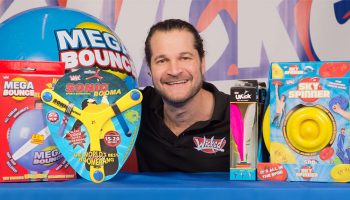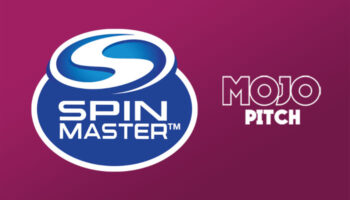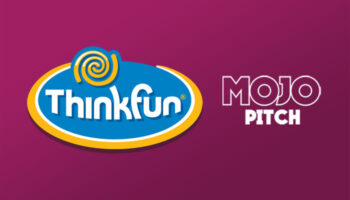First-time inventor Mark Langley discusses how his codebreaking game, decypher, got to market

First, Mark, congratulations – your game looks stunning. So… As the creator of decypher, how would you describe it?
Thank you! In simple terms, I’d describe it as a stylish and competitive two-player codebreaking game… But with a difference. Even though I say it myself, it’s a wonderfully compact, tactile product. It looks clever and logical in its design, and it makes you feel clever when playing.
In terms of gameplay, I’ve heard it described as a sleek, more clever version of the board game Mastermind…
That comparison has been made, yes! That’s because both games share the challenge of breaking secret codes, and the very satisfying process of logical deduction and elimination. There’s also certainly a 70’s vibe with decypher’s distinctive retro styling…
But beyond that, they’re very different, aren’t they?
Yes. The big difference with decypher is the competitive ‘head-to-head’ nature of the gameplay: both players are in a tense race to crack each other’s secret number code… That can be either a five- or ten-digit sequence; the rules explain both ways to play.
In fact, decypher provides different levels of challenge for different abilities… We have instructions for three other gameplays that we plan to release on the website. And the other distinctive aspect is the block-turning deduction process… I don’t recall ever seeing this mechanism in another game!

It’s ingenious! How did you come up with the original idea?
The design’s been through many different iterations over a number of years. Originally, the idea was sparked by my then nine-year-old son. He came home from school announcing he needed to take a homemade game into a maths lesson… And it needed to involve numbers in some way.
Oh gawd…
Yes. My heart sank a little… Maths is not my preferred subject at all! Anyhow, I love problem solving, and this got me thinking about typography and different number forms. Being a child that grew up in the 70s, the LED digital watch and clock display popped into my mind. I love the fact that, in a digital-number display, the seven segments – or lines – can create every number from zero to nine.
Sorry; just to clarify… You’re saying that you love how every digital number from, nought to nine, can be made up from seven straight lines?
Exactly. Realising that drew me into thinking about systems and patterns, and how this was such an elegant and iconic format. I thought it deserved to be employed as a game mechanism… But I had really no idea how.
Great! What an interesting place to start… So after you had that basic thought, what did you do?
I began by making a simple cardboard design and jotting down some potential game ideas. At that point in time, I was busy juggling family life, my work in education and my own art practice and exhibitions. Besides that, I had no real insight into the boardgames industry or the hobby gaming community. I only arrived at the serious game design process and decypher’s codebreaking elements a few years later.
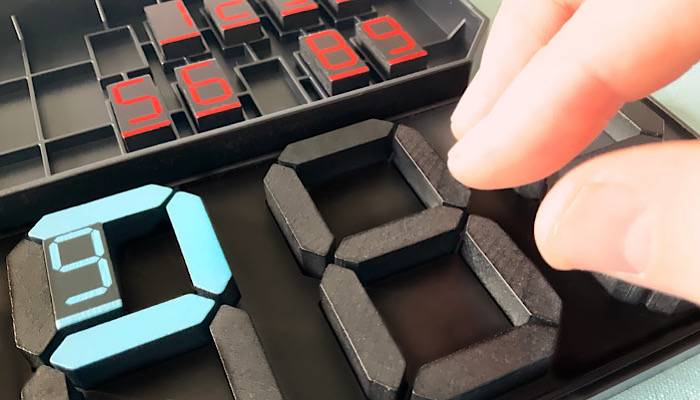
Oh, I see! You didn’t just create decypher and send your son back to school with a prototype in his satchel?
Ha! No, if only. The initial concept was simply ‘mothballed’ for a long time…
Alright. You mention art practice and exhibitions… I’d like to come back to that later. Meanwhile, at what point did you know you were definitely onto something, though?
Once I began making early versions of the game, I had a really good feeling that there was something intrinsically satisfying about flipping over these double-sided blocks to make different numbers. However, this aspect alone didn’t represent a playable game of any sort. I’m somebody who discovers and learns things through play and doing stuff, so I guess this would be termed ‘experiential learning’.
Right…
It was only by making a 3D prototype and physically playing with it that I began exploring it’s real potential. That helped formulate the game’s core mechanism. It’s an extremely adaptable system! The codebreaking aspect was a natural evolution as it functions in such an elegant, simple way… To me it felt intuitive, yet fresh. I was excited! Or at least I was until I playtested an early prototype at the 2019 UK Games Expo. The players’ response was very positive – but a chance conversation with a publisher dampened my hopes a little.
Oh?
He was initially very complimentary, but – due to potential production costs – he couldn’t imagine a publisher ever manufacturing it. That was a bit of a blow, and brought home to me the hard realities that, for a publisher, a game always needs to be considered investable and commercially viable to manufacture.
A lot of people might well have put it down and never picked it up again at that point, Mark. So how did you go about getting it to market?
Well… Although game design is outside of my natural comfort zone, I quickly discovered I had a range of adjacent creative skills that meant I could problem solve, make prototypes and short demo videos to show publishers. So In 2021, I emailed Gavin Ucko at The Happy Puzzle Company a ‘sizzle’ video of a board game – but not decypher!

That game utilised a version of the decypher components in a very different way. Within hours, Gavin sent me a very enthusiastic reply. About a week or so later, we met at the UK Games Expo. I did a five-minute pitch… Then, about a week later, we arranged to meet in his offices with a view to discuss how we could somehow develop this game. We both knew it wasn’t quite right…
This is a bit of a rollercoaster…
Ha! Well, I’d put a couple of the older prototypes in my bag, including the original ‘unpublishable’ decypher. After about 30 minutes, I mentioned that I had these other games in my bag. I suspect the moment Gavin set eyes on my prototype and I uttered the word, “codebreaking” he knew this was what he was looking for. We immediately booked another meeting!
What was the biggest challenge in showing, sharing or pitching your idea?
The UK Games Expo was a great eye-opener… When I first visited in 2019, I became acutely aware that this was a wonderfully diverse and welcoming community. Suddenly, I was bombarded with a new language and new genres… But The Playtest Zone offered some sense of reassurance, as I could see other budding designers navigating a similar route.
Finding a publisher was a different proposition, however, and I confess even now this still involves a fair amount of research. There’s tons of information via podcasts, websites and organisations such as Mojo Nation of course!
Oh, I wouldn’t put too much stock in that rag!
Well, I don’t know if I told you but I actually participated in the Virtual Mojo Pitch a couple of years ago with some different prototypes. It was crazy finding myself ‘virtually in the room’ and speaking to decision makers at Goliath or Mattel or – in the case of Hasbro – meeting Tanya Thompson!
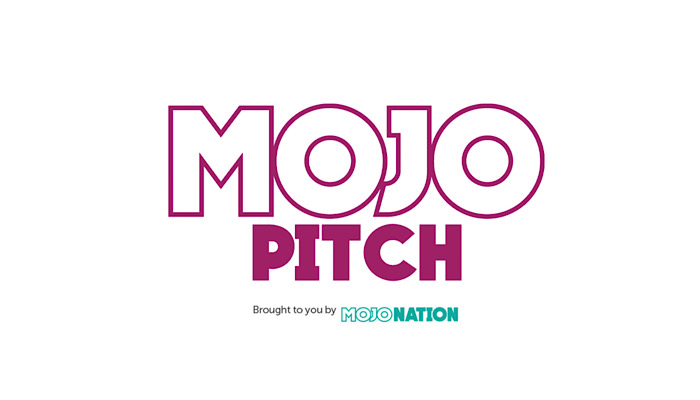
I’m going to have to stop you there… We now have to use her full title: she’s The I.D.I.O.T.-Award Winning Tanya Thompson! Either way, useful feedback?
Really useful, and a great boost to my confidence. What a great experience! And actually, that brings me back to Gavin… I certainly believe I struck it lucky finding the right publishing partner with The Happy Puzzle Company. I can see easily that decypher would not be a great fit for many of the boardgame companies out there. However, I think its tactile, puzzle-like qualities –combined with the distinctive box design – offer something quite different in terms of the overall product.
On that subject, then, in what ways has the game evolved since you met Gavin Ucko and his team?
Gavin’s experience and enthusiasm have been invaluable. He has such a good eye for what appeals to his existing and new customers. I know he also loves a great-looking game, and he always comments on the high-production values in my prototypes. For me, it’s important to show you believe in your game and I take every effort to produce the ‘sexiest’ looking version of a game. The pitch is always an opportunity to attract a new partner, and visual seduction is always a great start! I’m also fortunate to have creative connections and use the skills of a great technical guy who assists with some of the prototype fabrication.
So how ready was the game at that critical meeting?
In many respects, I feel the game arrived at The Happy Puzzle Company 90% finished. However, that last 10%… That is hard work, and it’s so very important to get right! It’s also true that – without the meeting with Gavin – it would probably still be sitting on my shelf, 90% finished: still looking ‘sexy’ but just gathering dust. Gavin’s passion and drive to bring a game to market swiftly meant that, within 12 months, Gavin arranged the manufacturing, began the marketing and started shipping to the UK. He somehow manages to multi-task across all aspect of the process… It’s quite remarkable!
And how do you feel now the game is out?
Aside from the tremendous feedback I’ve received, what I’m most pleased about is that when I see the game on a shelf, it genuinely feels and looks like my game. I’m so pleased we were uncompromising in our ambition to bring this to market. Gavin and his team did such a great job with the final product, and the fact that they faithfully shared in my vision is wonderful.

Away from games, Mark, what is it that keeps you busy? You mentioned art?
Yes. I’ve spent most of my life being creative is some way. Originally, I studied for a Fine Art degree in the mid ’80s, and this lead to an M.A. in the early ’90s. I then went into teaching in Further Education, and much of my energy over the years has gone into teaching or trying to support and inspire the next generation of young artists and designers.
In what areas?
It can include writing, drawing, photography, sculpture or creating conceptual sound and video installations. I’ve always been restless to create and exhibit innovative and playful art that encourages audience participation. This might include placing the scent of freshly peeled oranges into a building’s ventilation system, or a video installation where the sound of birdsong at dawn is transcribed into a film of gestural shadow drawings…
Just a second – this sounds like proper art; these are proper – what’s the word?
Installations! Yes… The oranges were an installation called Citrus Broadcast in 1993; the bird song was from Mimic in 2016.
Wow. Exploring games must feels like a real gear change, then?
I guess it does seem like a significant shift, but to me it feels like I’m giving myself permission to generate new concepts but within different constraints. My ideas are simply finding another way to connect and engage with people. Perhaps this illustrates the art of re-invention where the creativity of play still happens but in an entirely different way.

Fantastic. Yes; a few different restrictions, a few factor nudges… Games! And have you plans for more?
There’s an African proverb which goes something like “It takes a village to raise a child”. Well, decypher is certainly my ‘brainchild’, and I feel like it’s taken the collective efforts of a village to finally get it into people’s hands!
Ha!
I know that decypher really wouldn’t have come to fruition without the tremendous support and enduring patience from my close family and friends. But to answer you question… More games? Absolutely! I’m itching to do more. Seeing decypher at the London Toy Fair and then reaching an international audience at The Nuremberg Toy Fair has been a real thrill. Happy Puzzle have been great, so who knows, perhaps we’ll find the opportunity to work together again?
Final question then, Mark: what’s the most interesting object in your office or on your desk?
My office is currently a cross between Aladdin’s cave and Steptoe’s yard…
Ha! Steptoe’s yard! Love it!
Ha! It is, though… But alongside half-finished game prototypes, I have a large piece of gold about the size of my fist. It’s solid and beautiful, and it occasionally winks at me in the light…
Sounds like Billy Langsworthy…
Ha! Well, regrettably, it only has the illusion of value…
Still sounds like Billy Langsworthy! Is it not real gold?
No, sadly. It’s actually just a wonderfully large chunk of fool’s gold – iron pyrite. I find it interesting because, as an object, it’s one of those magical contradictions… Perhaps it’s an illusive and twinkling reminder not to take everything in life for granted, and to treasure the simple things? Or then again, maybe it’s just an old rock!
Wonderful. Congratulations again then, Mark, on getting to market. I’m sure our paths will cross again! In the meanwhile, thank you for your time – and good luck with decypher.

–
To stay in the loop with the latest news, interviews and features from the world of toy and game design, sign up to our weekly newsletter here














